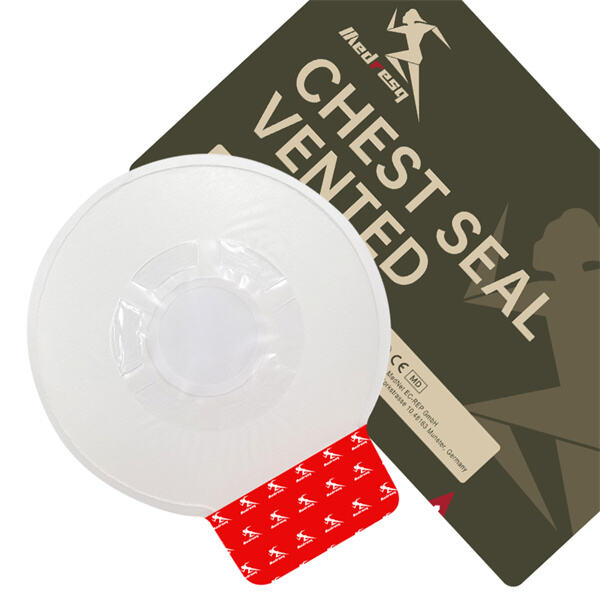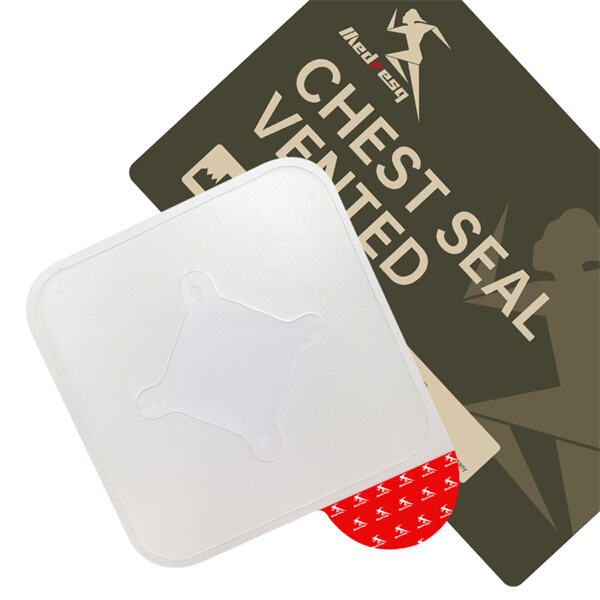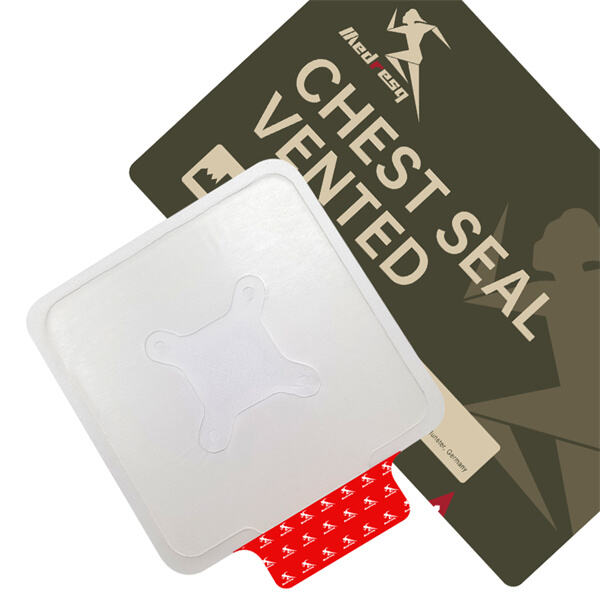If somebody is severely harmed, it will be important to act fast and make use of great equipment so that you can give help. One of the tools is a chest seal for treatment. A chest seal on the other hand is a large, sticky patch that can be applied over a hole in someones chest. This in turn would prevent air from getting into the chest cavity, leading to serious complications like a collapsed lung. If air enters into the chest cavity, this can also apply pressure and make it more difficult for breathing which in turned leads to a very dangerous situation.
The very first step to use a chest seal correctly is finding the injury. You can check for this by looking at whether there are any open cuts or perhaps you can truly hear the corn sucking in. This noise indicates that the air is entering into the thorax which is bad. If you can find the injury, place it as close over that area (ideally you would pinch this off if present and feasible with your gloved hand) Open package & put gel side down on wound. Be sure the entire wound is covered with this chest seal, that it adheres to dry skin. A seal that has not been properly applied may fail to function as intended.
Chest seals can be very helpful in the event of an emergency. One reason, we believe they can prevent major chest injuries. Essentially, chest seals put an air-tight cover over the wound to keep outside air from being sucked into the outter layer of your lung and collapsing it. This simply means they have a higher probability of taking in reath and also being risk-free.
CHEST SEALS: A chest seals is good because they are also something really easy to use and put on quickly. That can be a crucial factor in the event of an emergency when every second counts. Time is of the essence when someone has been hurt and every moment counts in terms of having an influence on the result. Anyone can learn how to apply a chest seal correctly with some minimal training, which makes it an excellent option for bystander and pre-hospital care providers.

Chest seals must be placed correctly in order to work properly. Chest seals: These should be applied to any open chest wounds (e.g, bullet holes or injuries resulting from a direct impact). However, always make sure that the chest seal covers all of the wound and adheres to skin well enough for an airtight environment. By using the wrong adhesive, it may be ineffective and they are still left at risk.

Pick a seal so that it is large enough to cover the entire wound. This is critical because if the seal does not cover a large surface area, it would fail to shield this part of your firearm. Secondly, it should have a strong sticky part to make perfect seal. For the sealant to convert as much into a sticky substance, there comes time when it remembers and peels off. Lastly, choose a chest seal that is robust and supports different functions such as its utilization in both wet and dry atmospheres

Learn the basics to get yourself started How to identify an open wound in the chest and how to put a Chest seal correctly so that it is closed off from air. This is a skill that you might have to practice, which can take time but the more diligent you are with it the easier these skills will become. This will help interpreters and medical workers respond more quickly in emergencies with confidence, which can save lives.
We focus on producing top-quality chest seal use, such as individual first-aid kits, medical equipment for the military as well as emergency kits for pre-hospitals to ensure reliability in emergency circumstances.
Our cutting-edge production line, with over 15,000 square meters of non-sterile spaces and 1000 square meters of chest seal use is designed to ensure the highest manufacturing standards.
Through chest seal use testing, the most advanced production equipment, and a vast inventory, we guarantee the highest quality and reliability in emergency medical services for various applications.
Our team of specialists can provide customized solutions, chest seal use customer service and support for clients who have a wide range of medical emergency requirements.